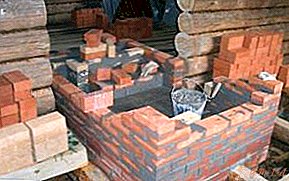 Lining in construction is called decoration to protect any structures from various negative effects. Moreover, the appearance of such a coating does not matter. During the construction of the furnace, the lining is used for facing the inside of the chamber. Its main task is to ensure the protection of the walls and other elements of the furnace from possible damage during operation that may occur as a result of thermal, mechanical, chemical exposure. The lining extends the life of the furnace.
Lining in construction is called decoration to protect any structures from various negative effects. Moreover, the appearance of such a coating does not matter. During the construction of the furnace, the lining is used for facing the inside of the chamber. Its main task is to ensure the protection of the walls and other elements of the furnace from possible damage during operation that may occur as a result of thermal, mechanical, chemical exposure. The lining extends the life of the furnace.
What is the lining of the furnace, in what cases is it used
 The competent design of the furnace is considered one of the main factors in the construction of brick ovens, because this element of this heating structure is most exposed to high temperatures. Brick, which is used during the laying of the stove, under the influence of fire, can burn, deform due to lack of moisture. To avoid this and extend the life of heating facilities, as well as ensure the safety of people during operation of the furnace, the brick must be protected from fire. For this, the lining is intended.
The competent design of the furnace is considered one of the main factors in the construction of brick ovens, because this element of this heating structure is most exposed to high temperatures. Brick, which is used during the laying of the stove, under the influence of fire, can burn, deform due to lack of moisture. To avoid this and extend the life of heating facilities, as well as ensure the safety of people during operation of the furnace, the brick must be protected from fire. For this, the lining is intended.
REFERENCE! It should be noted that the surface of the walls of the chamber of a metal furnace, solid fuel boilers also requires protection. This is necessary so that the metal, steel panels do not burn out during operation. For this reason, many manufacturers equip furnaces of steel devices with kaolin, chamotte panels.
Most furnace owners think about lining. During its construction, it is important to correctly calculate the thickness of the material, otherwise the walls of the stove will not be able to warm up well. Heat can penetrate only into the chimney, but not into the room. The efficiency of the furnace can significantly decrease, which can lead to an increase in fuel costs, because it will be required in much larger quantities for heating the thick walls of the chamber.
Lining methods
Lining is carried out in different ways. The appropriate method is selected depending on which material the stove is built from. Methods of building protection:
- lining the inside of the stove with finished fireclay bricks that can withstand any temperature - this method is popular due to the fact that the material, with excellent protective qualities, is also very cheap;

- installation of heat-reflecting screens - effective for metal furnaces used in saunas;
- the use of chipped stone from natural rocks - sandstone or quartz;
- the use of roll materials or plates - basalt fiber, cardboard or kaolin paper, vermiculite plates;
- coating the walls with special solutions or substances - chamotte or mullite mixtures sold in stores.
IMPORTANT! The advantage of using the mortar for lining purposes is that it can be used to create an absolutely monolithic surface, which will become an ideal fence that protects the brick from the effects of fire. The downside of such a footer is that it will require faster repair than masonry made of stone or fireclay bricks.
Use of refractory adhesive for lining
For fastening various materials used to build the inner, protective surface of the furnace, it is better to use refractory, high-temperature glue. It will perfectly hold together refractory bricks or basalt fiber boards. Glue is sold in special containers, after opening which, the mass is thoroughly mixed. Before applying glue to the surface, it should be moistened. The coating thickness is 3 mm, if, in addition to glue for lining, nothing else will be used, then it is necessary to apply several layers of it, with an interval of 15 minutes. The protective layer dries in about a day.
Lining work is best left to professionals. The high-quality implementation of this task will allow you not to think about repairing the furnace for a long time.


Leave Your Comment